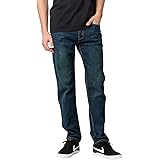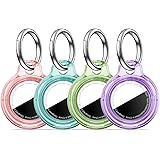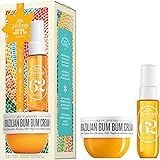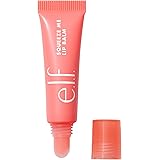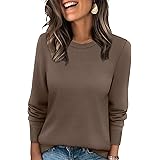Building your English vocabulary for specialized topics like sustainable fashion is essential for fluent and confident communication, as Teacher Tiffany highlighted in the video above. Understanding key terms allows you to articulate complex ideas, engage in meaningful discussions, and stay informed about crucial global trends. This article delves deeper into the foundational vocabulary introduced, providing additional context, examples, and insights to solidify your grasp of this important subject.
Understanding the Circular Economy in Fashion
The concept of a circular economy is a game-changer for the fashion industry, moving away from the traditional linear “take-make-dispose” model. As explained, it’s an economic system designed to eliminate waste and promote the continual use of resources. However, its application in fashion goes far beyond simply repurposing plastic bottles into bags.
A true circular economy in fashion envisions every garment, accessory, and textile being designed for longevity, repairability, and ultimately, regeneration. Imagine a pair of jeans that, instead of being thrown away, can be easily disassembled, with its denim fibers recycled into new fabric, its metal buttons reused, and its zipper repurposed. This cyclical process dramatically reduces the demand for virgin resources and minimizes landfill waste.
Key Elements of a Circular Fashion System:
- Design for Durability and Repair: Creating items that are built to last and can be easily fixed if damaged.
- Recycling and Upcycling: Transforming waste materials into new products, as exemplified by turning plastic into fabric or old garments into new designs.
- Rental and Resale Models: Extending the life of garments by allowing multiple users to enjoy them, through services like clothing rental subscriptions or second-hand marketplaces.
- Biodegradable Materials: Utilizing natural fibers that can safely return to the earth at the end of their life cycle, enriching soil rather than polluting it.
In contrast to the wasteful practices often seen in the industry, the circular economy offers a regenerative approach, where fashion items maintain their value for as long as possible, benefiting both the environment and consumers who gain access to more durable, ethically produced clothing.
The Rise and Impact of Fast Fashion
On the opposite end of the spectrum from a circular model, we encounter fast fashion. Teacher Tiffany defined this as a business model centered on producing inexpensive, trendy clothing rapidly to meet consumer demand. While it offers affordability and quick access to the latest styles, its environmental and ethical implications are significant and widely criticized.
The essence of fast fashion lies in its speed. New collections are introduced almost weekly, encouraging consumers to buy more frequently and dispose of items quickly as trends shift. This constant churn necessitates cheap labor, low-quality materials, and often unsustainable manufacturing processes. For example, a popular trend like the “cropped white t-shirt” can lead to millions of units being produced in factories across the globe, with little regard for the working conditions of garment makers or the ecological footprint of the production process.
Environmental and Ethical Concerns:
- Resource Depletion: Massive use of water for cotton cultivation and garment dyeing, often in water-stressed regions.
- Chemical Pollution: Widespread use of toxic dyes and finishing chemicals, which pollute waterways and harm workers’ health.
- Waste Generation: The sheer volume of low-quality garments means a significant portion ends up in landfills after only a few wears, contributing to textile waste.
- Labor Exploitation: Pressure for rapid, cheap production often leads to poor working conditions, low wages, and long hours for factory workers in developing countries.
- Microplastic Pollution: Many inexpensive synthetic fabrics (like polyester) shed microplastics into our oceans every time they’re washed.
Understanding fast fashion is crucial for any English learner discussing sustainable fashion because it represents the dominant, yet highly problematic, paradigm that sustainable alternatives are striving to overcome. It highlights the urgent need for change within the industry.
Embracing Slow Fashion: A Sustainable Counter-Movement
Where fast fashion prioritizes speed and volume, slow fashion champions quality, longevity, and thoughtful consumption. This approach to fashion emphasizes durability, ethical production, and the use of long-lasting materials, often celebrating craftsmanship and timeless design over fleeting trends.
Teacher Tiffany’s personal anecdote about appreciating quality as she got older resonates with many. Investing in fewer, higher-quality pieces might seem more expensive initially, but these garments often last for years, reducing the need for constant replacements. This not only saves money over time but also significantly lessens environmental impact.
Principles and Benefits of Slow Fashion:
- Quality over Quantity: Focus on well-made items using durable, high-quality materials such as organic cotton, linen, hemp, or ethically sourced wool.
- Ethical Production: Ensuring fair wages, safe working conditions, and transparent supply chains for all involved in the manufacturing process.
- Timeless Design: Creating classic styles that transcend seasonal trends, encouraging consumers to cherish their clothing for longer.
- Local and Artisan Production: Supporting smaller businesses and skilled craftspeople, often reducing transportation emissions and preserving traditional techniques.
- Reduced Environmental Footprint: Lower consumption means less waste, fewer resources used, and less pollution from manufacturing.
In contrast to the throwaway culture promoted by fast fashion, slow fashion encourages a deeper connection with our clothing, promoting mindful shopping habits and appreciation for the resources and labor involved in garment creation. It’s a key pillar in the broader movement towards sustainable fashion.
What Does ‘Sustainable’ Really Mean in Fashion?
The term sustainable is central to our discussion, referring to methods and materials that do not deplete natural resources, aiming for long-term environmental balance. In the fashion context, it often translates to eco-friendly practices that minimize harm to the planet and its inhabitants.
However, “sustainable” is a broad term and can encompass many different aspects. It’s not just about using organic fabrics, though that’s a significant part. It’s also about how water is managed, what dyes are used, how much energy is consumed, and the ethical treatment of workers throughout the entire supply chain.
Key Aspects of Sustainable Fashion:
- Eco-friendly Materials:
- Organic Fibers: Like organic cotton, hemp, and linen, grown without harmful pesticides or synthetic fertilizers.
- Recycled Materials: Such as recycled polyester (RPET) made from plastic bottles or recycled cotton from textile waste.
- Innovative Bio-materials: Including fabrics made from pineapple leaves, mushrooms, or even algae.
- Minimized Water Consumption: Implementing water-efficient dyeing processes and promoting materials that require less water to grow.
- Reduced Chemical Use: Avoiding toxic chemicals in cultivation, dyeing, and finishing, opting for natural dyes or closed-loop systems.
- Ethical Production: Ensuring fair labor practices, safe working conditions, and living wages for all garment workers.
- Carbon Footprint Reduction: Minimizing energy use in production, choosing renewable energy sources, and reducing transportation emissions.
When discussing sustainable fashion, it’s vital to remember that sustainability is a journey, not a destination. Brands and consumers alike are continually striving to improve practices and make more conscious choices. By understanding the multifaceted nature of “sustainable,” English learners can engage in more nuanced and informed conversations about environmental responsibility in the fashion world.


